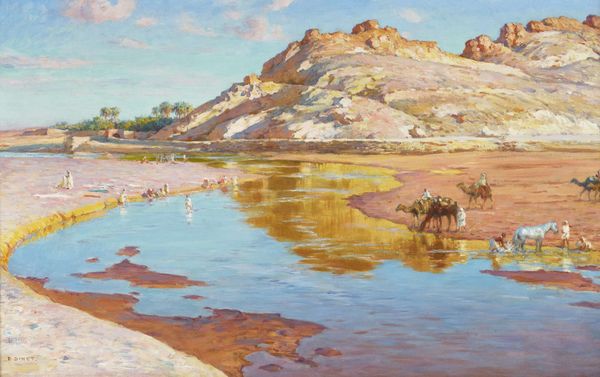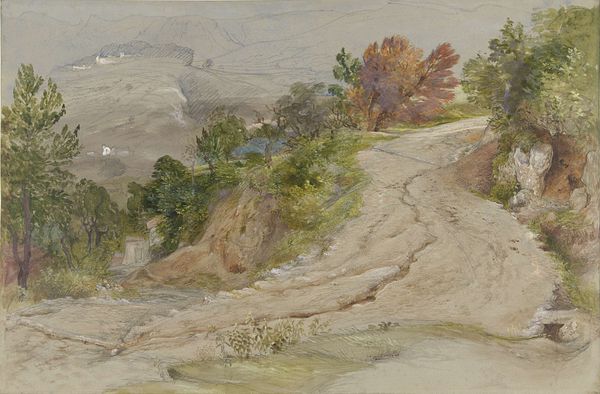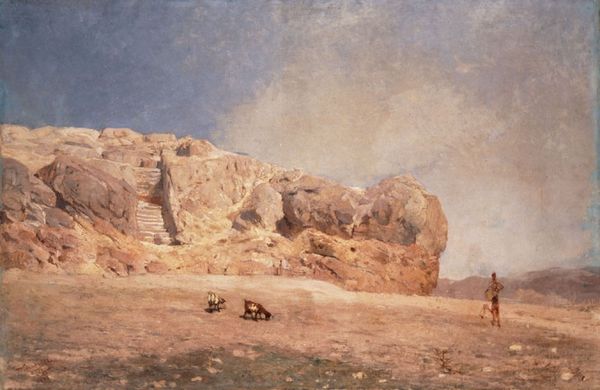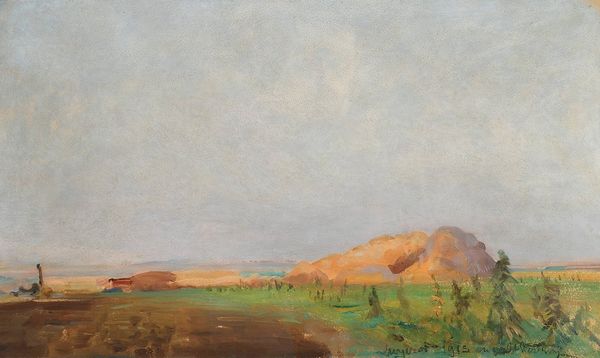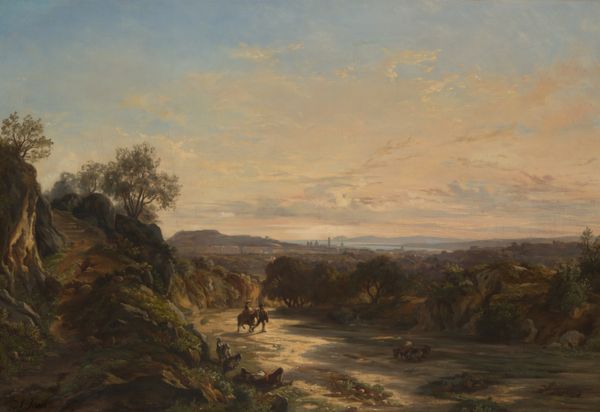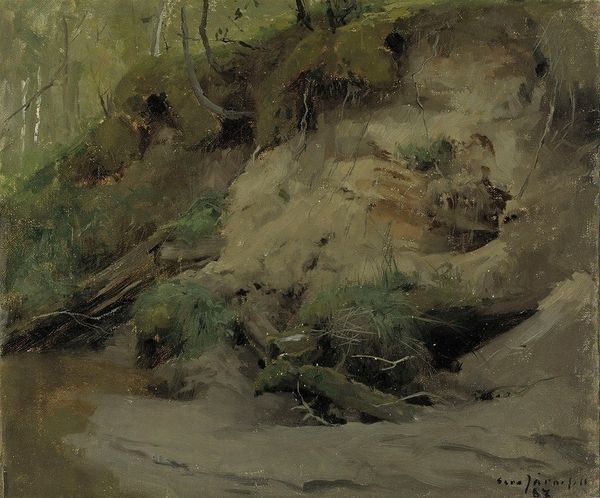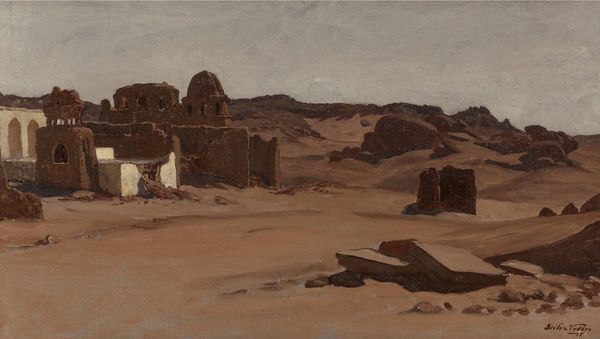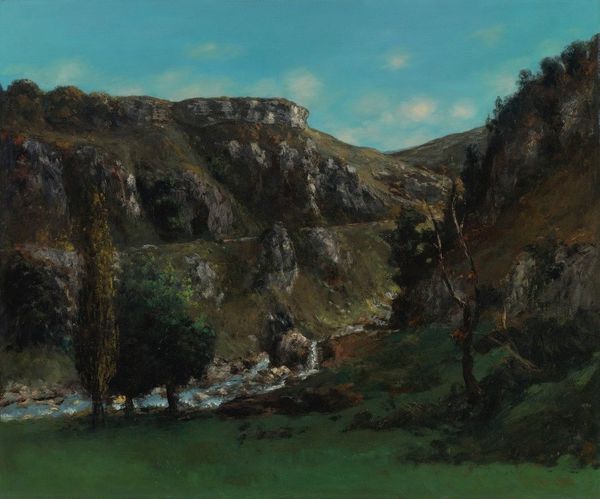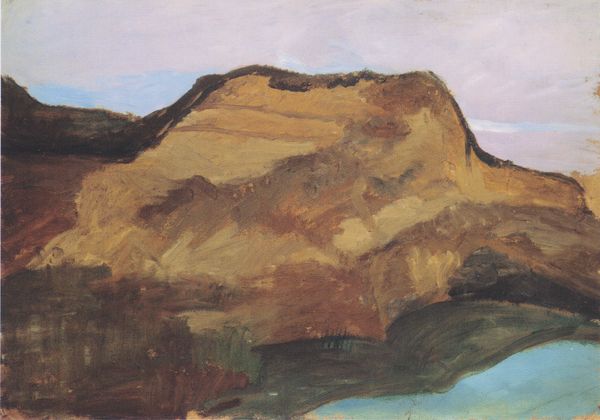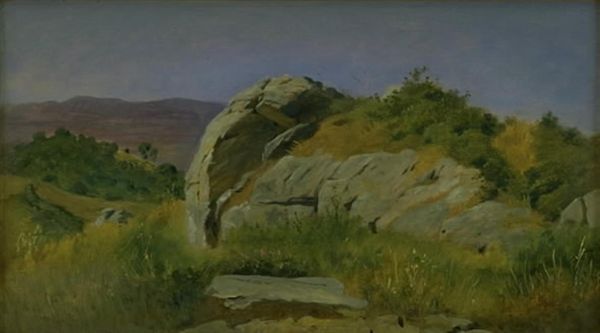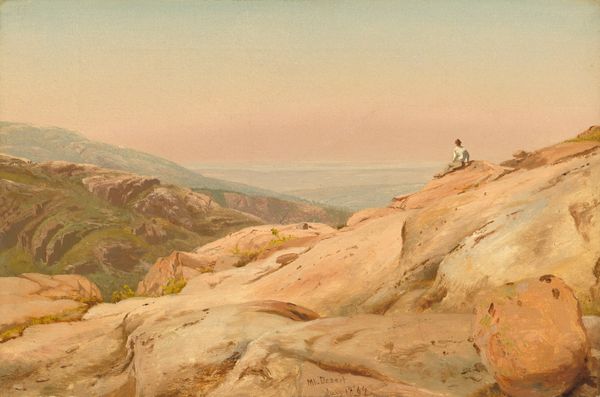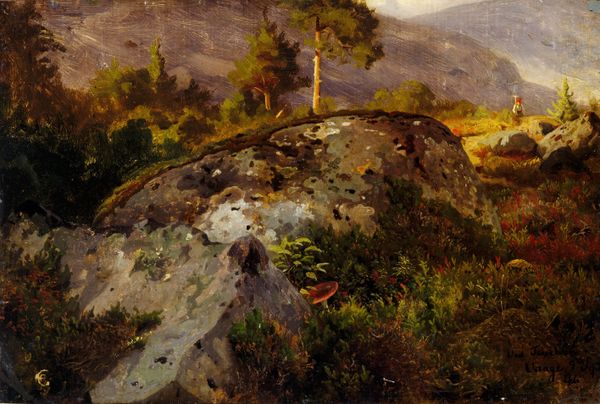
painting, oil-paint
#
narrative-art
#
painting
#
oil-paint
#
landscape
#
oil painting
#
genre-painting
#
realism
Copyright: Modern Artists: Artvee
Curator: Here we have "Comanche Land," an oil painting attributed to Robert McGinnis. It’s a scene of the American West. What strikes you about it? Editor: Immediately, it feels like a collision of narratives. We see settlers in the foreground with their wagon, cooking pot and what seems to be their claim; contrasted with a lone rider in the water, perhaps Indigenous, and then others posted high up in the rocks surveying them, which create a mood that's instantly fraught with tension. Curator: It's interesting to consider the context of imagery of the ‘Wild West.’ For a long time, these landscapes were used to enforce particular national narratives. Editor: Precisely, which is why images like these call for critical interrogation. Consider whose land we are talking about, and whose perspective dominates the depiction. We must understand art's historical ties to power. The presence of both the settlers and the indigenous people emphasizes ideas about territoriality and rightful occupation. Curator: And how ideas of Manifest Destiny and western expansion played out in art and popular culture of the time, reflecting particular political agendas. Look at the way McGinnis sets up that visual tension – the figures at a remove, looking down. Editor: It sets up the Indigenous population as forever vigilant and rightfully protective. It's not just about aesthetic qualities; it’s about understanding how these landscapes reinforce or challenge socio-political orders and contribute to shaping identities. The artist presents the situation as precarious. Curator: What do you make of the formal elements in this context? The expansive sky? The arid, rocky terrain? Editor: The landscape dominates, reflecting perhaps an attempt to portray the overwhelming vastness of the West and the inherent challenges for any group. Curator: Yes, that resonates, the setting as a symbol for broader historical currents, with its unforgiving dryness perhaps underscoring the stakes of the confrontation depicted. Editor: We see that through careful observation of paintings like these we might begin to excavate a better understanding of what that settlement meant to those displaced, to question, finally, whose West this really is. Curator: Indeed. Images of this era carry the weight of history. It's critical we don’t ignore the questions it presents.
Comments
No comments
Be the first to comment and join the conversation on the ultimate creative platform.

